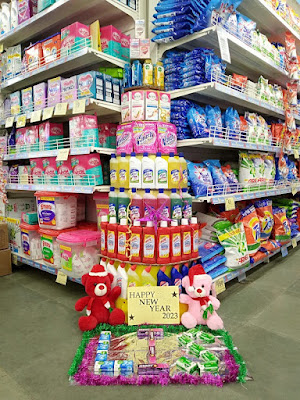A Guide to Merchandise Planning Process- Making Your Business Profitable!
There are several ways that a seller needs to follow to maximize profits and get more sales. One such evergreen measure is the merchandise planning process that includes selecting, managing, and displaying products in such a way that it brings the maximum turnover and increases brand visibility.
This activity generally meets the customer's demands by making the correct item available in quantity and price.
Several activities make a seller lose potential customers and increase the overall costs. This includes buying the merchandise in an unplanned quantity or not calculating the transportation or storage cost of it. Making a wrong purchase decision can also lead to a loss of valuable capital. Thus, merchandise planning is essential to keep the business running at the lowest cost and with high-profit margins.
The Merchandising Planning Process - Planning your Merchandise the Right Way!
Different industries have different demands and planning processes depending on various factors. The garment industry will focus on the product's color, size, and design. At the same time, a grocery store needs to purchase perishable and non-perishable items depending on the daily needs of its customers.
Therefore, different industries have different merchandising needs, and their merchandising processes for merchandise planning and acquisition will also differ.
However, there are some critical aspects in product merchandising and retail merchandising planning that almost every industry must follow to save more. Here is a brief of these steps.
Components of Merchandise Planning Management:
There are a few steps that every seller, regardless of the industry they are in, needs to follow. These include:
Product: One of the most critical aspects of the merchandise planning process includes the product. Retailers must purchase the right amount of products to meet the needs of their customers and refrain from accumulating unwanted inventory for themselves.
Price: Price is another sensitive factor, especially when the seller wants to profit in price-sensitive countries. The retailer must have an idea of the target customers and their likings as well as the knowledge of their spending power. The store will not see many sales if the products are out of the price range. The retailer must plan its prices well to ensure regular sales, liquidations, and reasonable profits.
Product Range: Another essential factor to consider when planning product merchandising is the range of products offered. A store must always provide its customers with an array of choices so that they have various options. There should be a range of designs, colors, textures, prices, ranges, etc. The seller has to keep the field concerning the demand to make maximum profits and decrease wastage.
Assortment: It is also essential to group products together so customers can easily find them. It helps to rank products of similar usage and category. An essential aspect of the merchandising planning process is the presentation of product categories and departments for customer convenience.
Space: Each retail store must have sufficient space for all products purchased. All products must be visible for the customer to buy them. All available space in a retail store should be used for hanging light fixtures, pendant lamps, hangers, mannequins, etc., to increase visibility. A customer is not going into your warehouse to find what they need.
Why Do You Need This Planning?
The merchandise planning process remains an essential aspect of a retail business. Here are some reasons why -
This can help a retailer refill its stock efficiently. This can make the inventory turnover rate higher.
It reduces storage costs. Proper inventory planning leads to less manpower, fewer costs, and fewer losses because most of the inventory is sold.
Adds value to the business as the customer rarely walks out empty-handed
Earnings increase as there are fewer markdowns and more sales.
Cost of Merchandising Planning
Merchandising planning process is undoubtedly a challenging task. It takes a lot of systematic steps, and a retailer needs to plan things well, or else they could end up with a lot of inventory in their warehouse. With the right merchandising planner or a merchandising company hired by a retailer, merchandising planning is well worth the effort and expense.
Proper planning will make the products getting away more accessible, and the customer will leave happier.
Merchandising planning is a concept that has sold been introduced previously. While many new to the industry may not realize the necessity of such an important task, veterans will undoubtedly vouch for it.

.webp)


Comments
Post a Comment